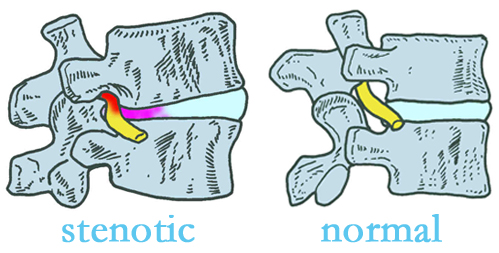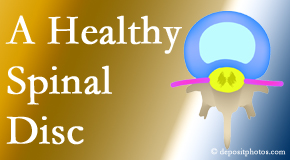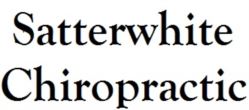A Healthy Oxford Spinal Disc
A cushion. A spacer. A spring. A spinal disc. Satterwhite Chiropractic knows a lot about the spinal intervertebral disc! Oxford chiropractic back pain and neck pain patients value that knowledge! The intervertebral disc in the human spine acts as a separator holding the spinal bone apart, the vertebrae, apart and permits motion of the spine. The disc also maintains a large opening for the nerves leaving the spine through which to pass. If this opening is thinned, which happens when discs degenerate and lose height, the nerves passing through are compressed. This compression impedes circulation to the nerve and inflammation of the nerve sets in. The narrowing of the nerve opening is called Oxford spinal stenosis. Shown here is a schematic and MRI picture of normal and stenotic nerve openings.

A SPRING
The intervertebral disc functions like a spring to hold the vertebra apart. The normal disc therefore functions to preclude nerve compression and to permit spinal motion. When the disc degenerates, or thins, it permits the adjacent vertebra to approximate one another, resulting in loss of motion, compressed nerve, and pain in the back or down the arms or legs. What maintains the intervertebral disc height? Normal discs contain a chemical termed glycosaminoglycan (GAG) which allows the disc to take in water from the fluid coming into the disc. Actually, the inside of a healthy disc is 80% water. The GAG content of the disc’s interior reduces significantly with degeneration, thus reducing the water content of the disc. The loss of water in the disc because of GAG loss is called degeneration. Disc degeneration reduces the ability of the disc to resist motion by over 65%. The incapacity to control motion of the vertebrae is called instability. (1)
BENEFICIAL TREATMENT: COX® TECHNIC
Let us look at two benefits for the spine when Cox® distraction manipulation is delivered.
First, Satterwhite Chiropractic offers a specialized type of Oxford spinal manipulation which enlarges the disc space height, enlarges the nerve opening size, decreases pressure inside the disc to help in circulation, restores lost range of motion to the spine and establishes nerve conduction to the brain for pain relief. (4) This latter benefit is termed afferentation. The manipulation undoes the effects of gravitational and work effort changes in the spine that cause spinal stenosis and loss of motion. Researchers revealed that spinal mobilization with leg movement in patients with lower extremity sciatica pain reduced low back and leg pain intensity, disability, pain; increased range of motion of spine; and satisfied patients in the short and long term. (2) Satterwhite Chiropractic benefits Oxford back pain sufferers’ discs!
Second, Satterwhite Chiropractic may recommend nutritional delivery of glycosaminoglycan by capsule which is boosted when combined with Cox® Technic. This combination allows increased levels in the disc. The glycosaminoglycan absorbs water to nine times its own volume, generating greater fluid content in the disc to improve both nerve opening size and assist prevention of disc degeneration and inflammation. Folic acid (Vitamin B9) plays a part in peripheral nerve injury healing by encouraging Schwann cell proliferation, migration, and secretion of nerve growth factor. (3)
CONTACT Satterwhite Chiropractic
Listen to this PODCAST by Dr. Jonathan Cerrutti as he shares his chiropractic care of a painful, stenotic disc and spinal canal due to disc herniation on The Back Doctors Podcast with Dr. Michael Johnson.
Schedule your Oxford chiropractic appointment today. Your Oxford spine will be grateful for the attention you give its cushy, separating, springy spinal disc!

